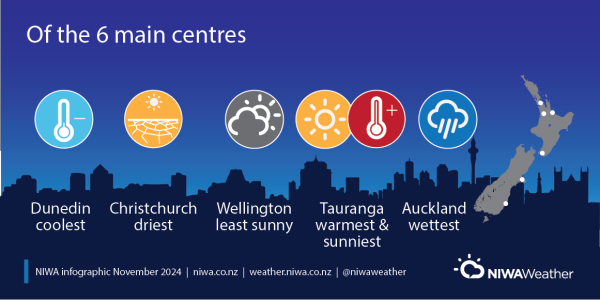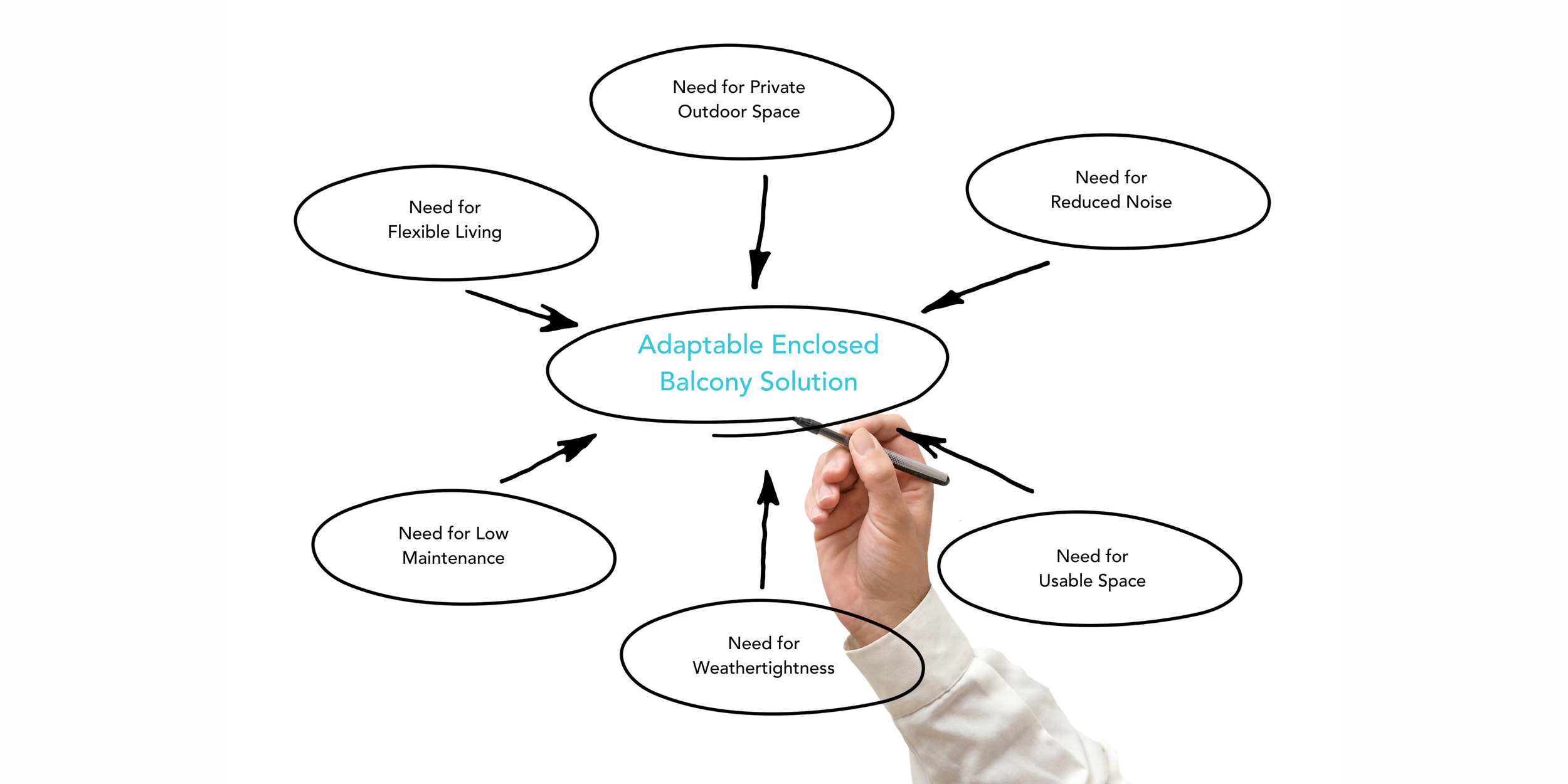Adaptable Balconies for Apartments
As apartment living becomes more prevalent across New Zealand, particularly in city centres like Auckland, Christchurch, and Wellington, architectural designs that enhance liveability and durability are in high demand. One such design consideration is the trend of enclosing balconies for which a debate has emerged about whether it offers long-term benefits or detracts from the property value and liveability. We explore the practical, aesthetic, and financial implications of enclosed balconies, to assess their impact on property value and market appeal.
Enclosed balcony design with large operable windows
Advantages of Enclosing Balconies
Enclosing balconies using glazing with large, operable openings, which balance the indoor-outdoor feel and preserve views can enhance the functionality and usability of apartment spaces in various ways:
Weather Protection and Usability
Enclosed balconies shield the space from New Zealand's variable weather, making them usable throughout the year. Our cities are renowned for high rainfall and wind. Auckland has 131 wet days per year closely followed by Wellington with 128 days. (Figure.NZ, 2024) These days often correspond with windy days, particularly in winter months. Wellington has gusts over 60 km per hour 173 days a year. (Te Ara, 2024) Glass-enclosed balconies with operable openings allow residents to enjoy outdoor-like spaces regardless of the season. When fully opened, these windows maintain a sense of openness; when closed, they create a protected, indoor extension that offers scenic views while sheltering residents from wind and rain.
NIWA, 2024
Reduced Maintenance and Weathertightness
Open balconies are directly exposed to the elements, which over time can lead to issues such as water ingress, material degradation, and increased maintenance requirements. According to Ministry of Business, Innovation, and Employment (MBIE), balconies have many building features that are prone to leaks, including handrail/balustrade fixings, balconies over living spaces, balustrade to wall junctions, clearance of claddings, flat roof, and pergola/outdoor roof fixings. (MBIE, 2024). In New Zealand’s damp and coastal environments, buildings are particularly vulnerable to weather damage.
Enclosed balconies provide an added layer of protection, minimising direct exposure and reducing the risk of water damage, a significant advantage in terms of long-term maintenance costs and weathertightness, which is highly valued in New Zealand’s property market following years of the leaky building crisis.
Increased Flexibility and Adaptable Space
Where there is a high demand for flexibility and adaptability in apartment housing, balconies tend to be overlooked as potential spaces to facilitate adaptability. Enclosed balconies with large operable openings offer a highly adaptable space. The ability to open the doors or windows fully preserves the feeling of an open balcony, with access to private outdoor space that supports residents' health and wellbeing. While the closed option transforms it into an indoor-like extension, ideal for various activities such as a study, relaxation area, sunroom, or extension of the living space. For buyers seeking additional usable space in compact apartments, this adaptable feature adds significant appeal and could support and improve residents' functional use of their dwellings.
Noise Reduction and Privacy
In urban areas, where street noise and close proximity to neighbours is a common issue, enclosed balconies help create a quieter, more private living environment. Apartments are best placed in city centres and near main transport routes, which makes them particularly vulnerable to noise. Reducing noise intrusion can enhance quality of life, increasing the desirability of properties with enclosed balconies.
Energy Efficiency
Glass enclosures can improve energy efficiency by providing an additional layer of protection. The glass enclosure retains warmth in winter and protects interiors from excessive direct sunlight in summer, potentially lowering heating and cooling costs. With energy efficiency becoming a more prominent factor in property valuations, this feature could positively impact market appeal.
Potential Disadvantages of Enclosing Balconies
Regulatory and Compliance Considerations
In New Zealand, enclosed balcony designs must meet specific building code requirements under the Building Act 2004, including performance criteria for fire safety, weathertightness, ventilation, and structural integrity. While glazed enclosures with operable openings simplify compliance with ventilation and natural light regulations, it may add complexity to resource or building consents that requires more design consideration.
Impact on Buyer Preferences
While glass-enclosed balconies provide flexibility, they may not appeal to all buyers, particularly those who prioritise fully open balconies for a traditional outdoor experience. By incorporating operable doors or windows with balustrade solutions, developers can meet in-between market demands, but open-air preferences may still influence resale considerations.
While demand for enclosed balconies is stronger in urban areas like Auckland, Wellington, and Christchurch, where buyers may prioritise usability over traditional balcony exposure, suburban apartment developments may lean toward open balconies to complement less densely built environments and emphasise natural views. Customising balcony design based on location-specific preferences can enhance market alignment.
Conclusion
The key features of well-designed balconies are their adaptability in use and function, along with their responsiveness to site-specific context such as orientation, weather exposure, views, and urban density. In New Zealand, enclosing apartment balconies with glass and large operable openings offers a practical response to climate challenges. This approach enhances space usability, reduces maintenance requirements, and appeals to buyers seeking flexibility. By addressing concerns about views, fresh air, and weathertightness, this design solution stands out as a compelling choice for modern urban developments.
If you want to explore adaptable design solutions for your next project, addressing weathertightness issues, or considering enclosing an existing balcony, get in touch with us today. Our team is here to provide tailored advice and expertise to help you maximise the value, longevity, and functionality of your property.
References
Figure.NZ. Annual wet days across selected New Zealand locations Accessed December 2024. [https://figure.nz]
Carl Walrond, 'Natural environment - Climate', Te Ara - the Encyclopedia of New Zealand, Accessed December 2024. [http://www.TeAra.govt.nz]
NIWA. New Zealand Climate and Weather Data. Accessed November 2024. [https://niwa.co.nz/]
Ministry of Business, Innovation, and Employment (MBIE). "Signs of a leaky home." Accessed November 2024. [https://www.building.govt.nz/]



